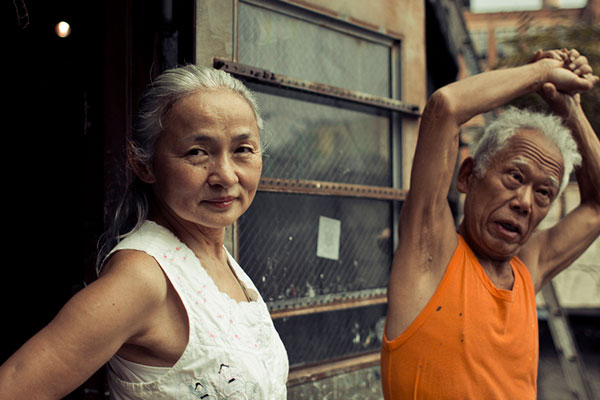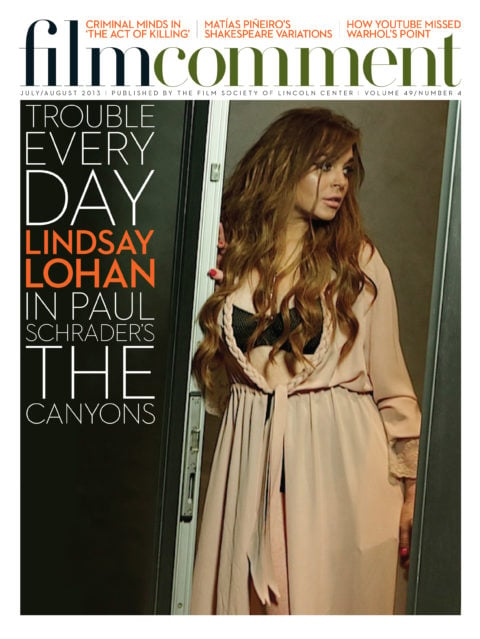
Japanese art sensation Ushio Shinohara moved to New York in 1969. He came to break into the major leagues. Things didn’t work out. The 19-year-old Noriko fell in love with the 41-year-old Ushio a few years later, and they have struggled along together ever since. Ushio, who at the time of the film was 80, is known as “the boxing painter.” For a long time he drank like he painted—with two-fisted excess (the documentary, which has some great action-painting sequences, also contains some depressing archival footage of Ushio’s drinking). Their son, an only child, also seems to have an alcohol problem.
Noriko often feels inferior to Ushio: “The average one has to support the genius,” he says. Ushio struggles for recognition (and beer money) while Noriko hovers in the art-world shadows. His work is overbearing, large, and confrontational; hers is playful and delicate. (The filmmakers at times animate her drawings in order, perhaps, to give them more weight.) It’s as if Ushio’s art is taking over their lives, piling up unsold, eating up all available space.
Why, then, is this a feel-good movie? The end credits make for a perfect coda: in slow motion, the couple flail at each other with paint-soaked boxing gloves. They wear safety goggles and are clearly enjoying themselves. They’re a living artwork—a husband-and-wife team whose creative lives are so intertwined that you can’t tell where one splattered mess ends and the next begins. Apparently, some things in life are far better than success.








